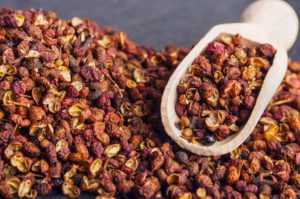Ever wonder how our taste buds work? Or what a flavor really is? This week, our sensory scientist Annette Hottenstein tackles some important sensory questions, breaking it down for all of us non-experts – and providing some fun facts along the way!
Question: What’s the difference between “taste” and “flavor”?
For sensory scientists, “taste” is the perception resulting from molecules perceived via the taste buds on the tongue. “Flavor” is a broader term that encompasses tastes and two other sensory components:
- Tastes
- Aromas
- Feeling Factors
Tastes
There are 5 widely recognized basic tastes that humans perceive: sweet, salty, sour, bitter and umami. There is a biological basis for each taste. Specific compounds in food, knowns as tastants, stimulate taste receptor cells:
| Basic Taste | Biological Basis | Tastant examples |
| Sweet | Energy rich nutrients | Sucrose (most mono and di-saccharides) |
| Salty | Electrolyte balance | Sodium chloride (NaCl) and other salts (Potassium Chloride, etc.) |
| Sour | Taste of acids – ‘off food detection’ | Acids (such as citric, tartaric, malic, lactic, phosphoric) |
| Bitter | Allows sensing of diverse natural toxins | Caffeine, Quinine |
| Umami | The taste of amino acids indicating protein rich foods | Glutamate (amino acids) & Ribonucleiotides (inosinate & guanylate) |
Aromas
 About 75-95% of most people refer to as “taste” actually comes from aromatics. The aroma of a food results from the perception of compounds called volatile aromas. “Volatile” means that compounds can travel through the air to reach the olfactory bulb in your nose. Over 7,000 volatile compounds have been identified in food.
About 75-95% of most people refer to as “taste” actually comes from aromatics. The aroma of a food results from the perception of compounds called volatile aromas. “Volatile” means that compounds can travel through the air to reach the olfactory bulb in your nose. Over 7,000 volatile compounds have been identified in food.
Some examples of volatile compounds found in foods are:
| Volatile Compound | Aroma | Food Examples |
| Isoamyl acetate | Fruity, Banana like | Bananas, circus peanut candy |
| Linalool | Floral, sweet Woody |
Coriander, Basil, Lavender, Blueberry flavored products |
| Vanillin | Vanilla | Vanilla beans & extract, vanilla ice cream, marshmallow |
| Caproic acid | Cheesy, waxy, goaty | Goat cheeses |
| Cinnamaldehyde | Cinnamon-like | Cinnamon, red hot candies |
Aromas are perceived via two types of olfaction: 1) orthonasal and 2) retronasal. Orthonasal olfaction is when volatile aromas from foods are perceived via the nose and is commonly referred to as “smell”. Retronasal olfaction is perceived when a food’s aromatics travel to the olfactory bulb via the “retronasal passage” at the back of the throat.
Fun fact: if you plug your nose while eating, you will only perceive basic tastes. Once you unplug your note, aromas will become noticeable.
Feeling Factors
Feeling factors are attributes of food that arise from either chemical or physical stimulation of the trigeminal nerve. This is the main nerve that branches throughout the mouth and nasal cavities. Chemical stimulation in the mouth, referred to as “oral chemesthesis”, is triggered by a wide array of compounds such as:
| Chemical compound | Feeling Factor | Food Example(s) |
| Capsaicin | Spicy heat/burn | Chili peppers |
| Menthol | Cooling | Peppermint Oil |
| Hydroxy-α-sanshool | Tingling vibration | Szechuan pepper |
| Eugenol | Numbing | Cloves |
 Chemical stimulation that is the felt in the nasal cavity is referred to as “pungency”. Allyl isothiocyanate, found in mustard and horseradish, is the chemical compound responsible for the irritating pungent nasal sensation. It should be noted that the term ‘pungent’ is also more widely used to describe any food with a strong smell or flavor such as chili peppers and aged cheeses.
Chemical stimulation that is the felt in the nasal cavity is referred to as “pungency”. Allyl isothiocyanate, found in mustard and horseradish, is the chemical compound responsible for the irritating pungent nasal sensation. It should be noted that the term ‘pungent’ is also more widely used to describe any food with a strong smell or flavor such as chili peppers and aged cheeses.
Physical stimulation of the trigeminal nerve relies on physical properties of foods, rather than chemicals. Examples include:
| Physical property | Feeling Factor | Food Examples |
| Temperature | Cold / Hot | Ice Cream / Hot Tea |
| Weight | Light / Heavy | Whipped Cream / Cheesecake |
| Texture | Rough, juicy, dry, sticky, soft, hard, springy, etc. | Granola bar, watermelon, cracker, toffee, hard candy, jello, etc. |
To learn more about Annette and our R&D capabilities, click here.


